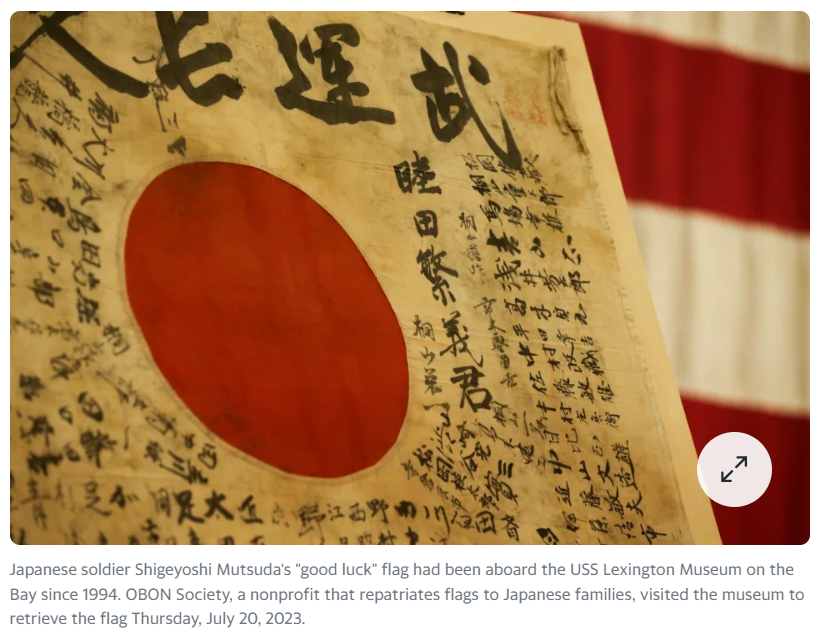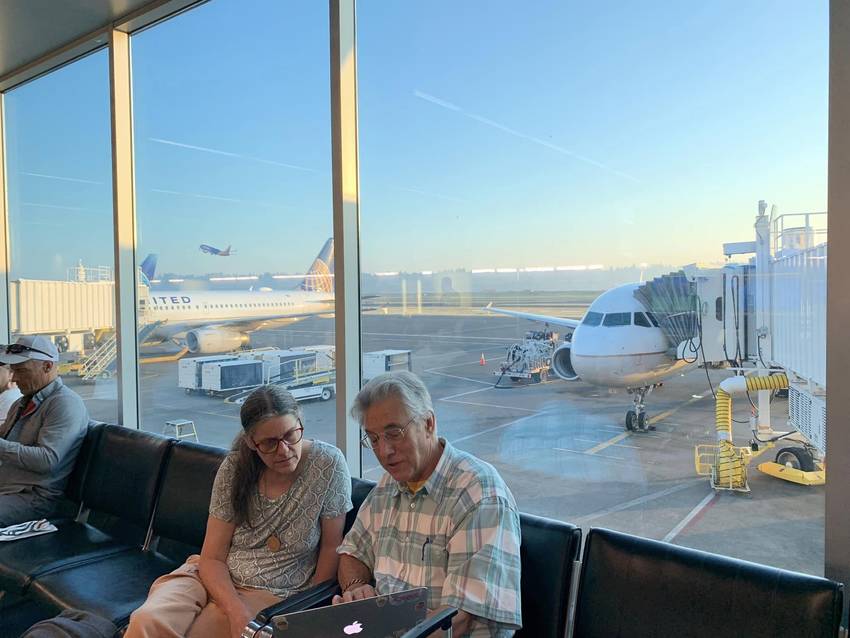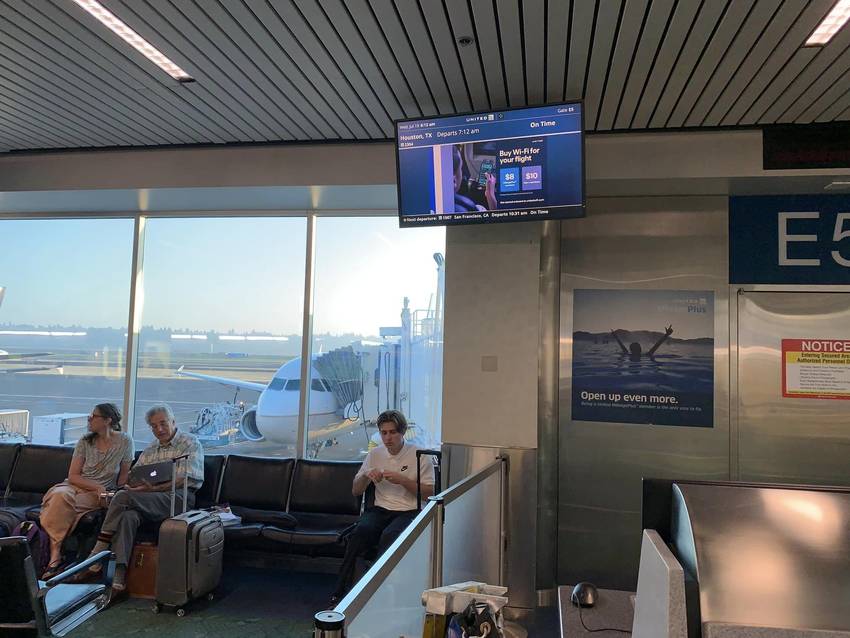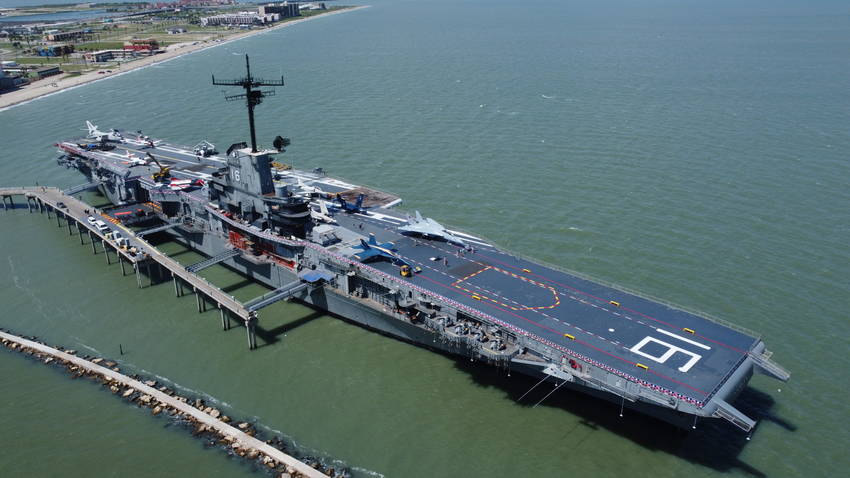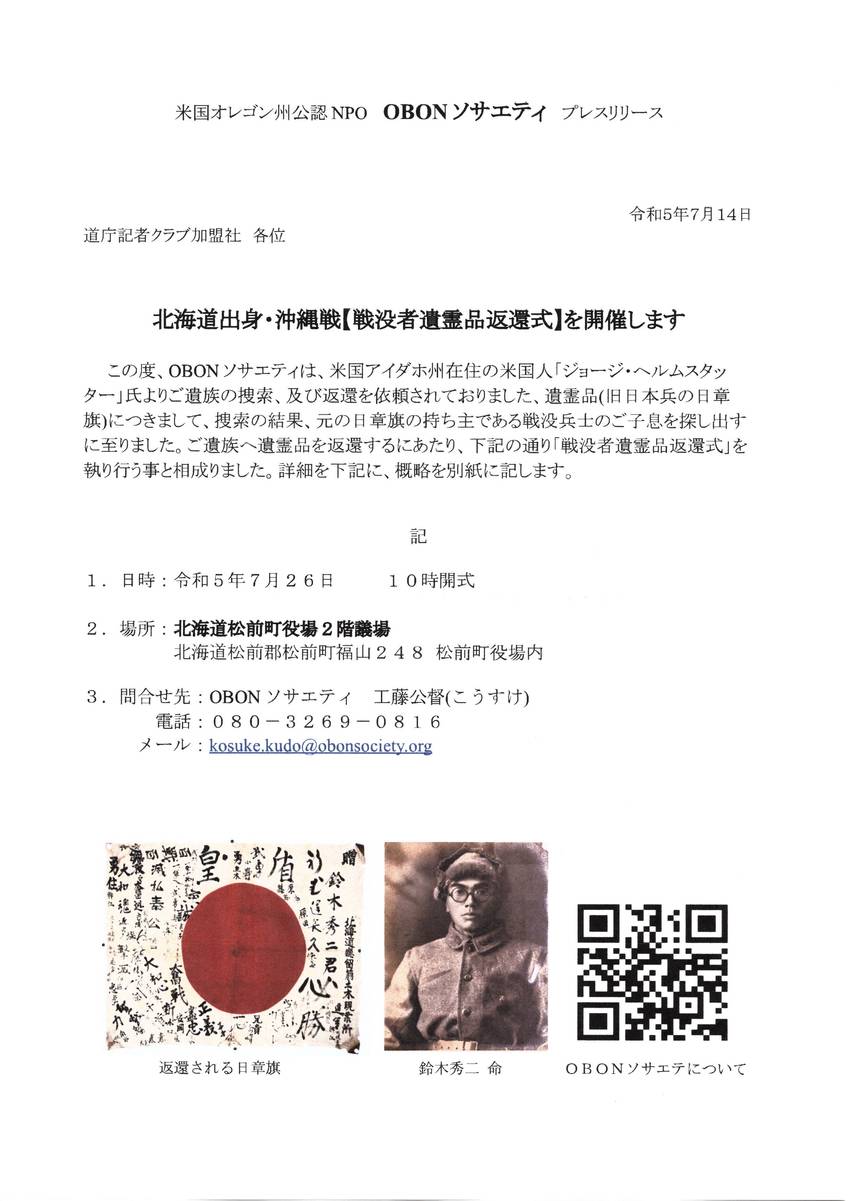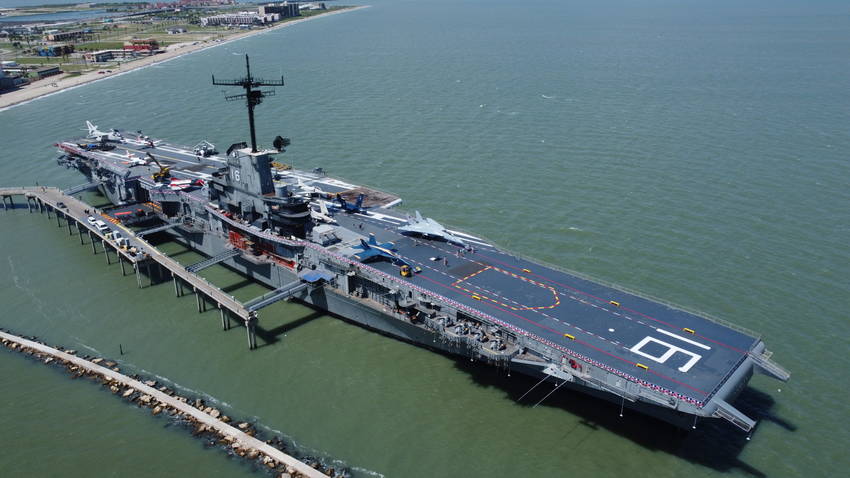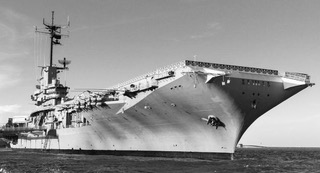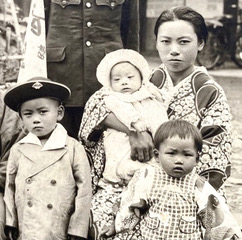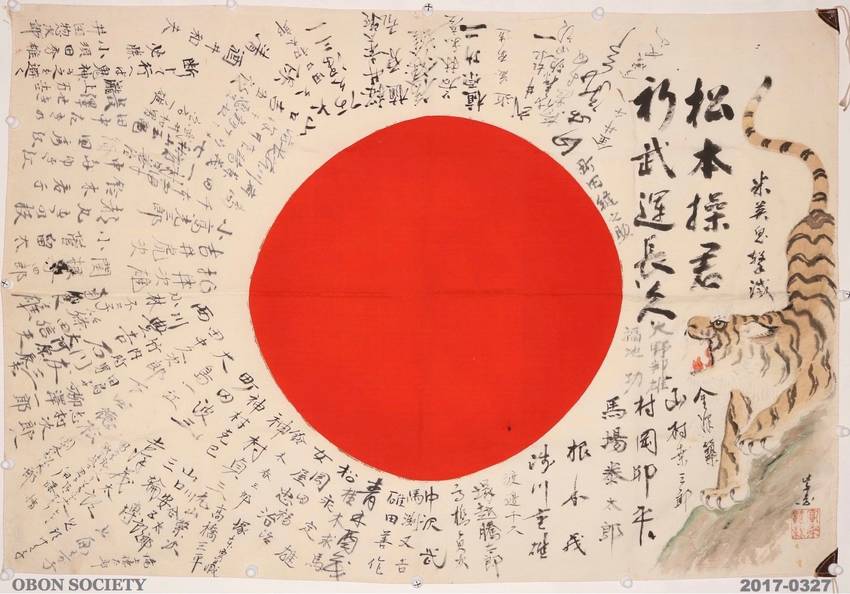Funeral postponed until flag aboard USS Lexington returns home to Japan
Jul
21
John Oliva, Corpus Christi Caller Times
July 21, 2023·3 min read
After being apart for about 80 years, a husband and wife will finally be reunited and buried together in Japan. The process began with an emotional ceremony Thursday on Corpus Christi's waterfront aboard the USS Lexington.
The ceremony was held aboard the floating museum to repatriate a good luck flag from World War II back to the Mutsuda family in Japan. It will be delivered Saturday, July 29.
The flag had hung aboard the USS Lexington Museum on the Bay since 1994. Initially, the museum staff thought it was a "meatball flag" with kamikaze pilots' names written on it.
Japanese soldier Shigeyoshi Mutsuda's "good luck" flag had been aboard the USS Lexington Museum on the Bay since 1994. OBON Society, a nonprofit that repatriates flags to Japanese families, visited the museum to retrieve the flag Thursday, July 20, 2023.
A family member of Shigeyoshi Mutsuda, a Japanese soldier who died during World War II, discovered the flag and realized it belonged to Mutsuda, his grandfather.
The family member reached out to OBON Society, a nonprofit that repatriates Japanese soldier's "good luck" flags, or yosegaki hinomaru, to their family, in hopes of retrieving his grandfather's only remains.
Good luck flags went to war with Japanese soldiers
A good luck flag was common for Japanese soldiers to have during World War II. They were Japanese flags signed by family, friends and neighbors and served as a memento to the soldiers of their loved ones. Unfortunately, good luck flags are often all that remains of their loved ones who were killed in action.
Rex Ziak, co-founder and president of the nonprofit, said the organization has repatriated more than 500 flags back to Japanese families. Normally American, Australian, Canadian or British veterans contact OBON Society wanting to give back the flags, Ziak said.
Donald E. Larson, former junior past national president of the Fleet Reserve Association Corpus Christi branch, holds a program of the Japanese "Good Luck" Flag Repatriation Ceremony at the USS Lexington Museum on the Bay Thursday, July 20, 2023.
But for the first time, the nonprofit received an email from a man in Japan asking for help.
When Ziak reached out to the USS Lexington Museum on the Bay with the information, Steve Banta, the museum's executive director, said he knew immediately he had to return it.
"We knew the flag did not belong to us and we endeavored to return it home," Banta said.
Ziak said his nonprofit is currently working on more than 900 items that will hopefully be returned to Japan. He said Mutsuda's family is looking forward to finally being reunited with their grandfather.
Hirofumi Murabayashi, consul general for the Japanese Consul-General Office in Houston, said he was honored to witness the repatriation ceremony and said Mutsuda's wife died this year at the age of 102.
"His family members have postponed the funeral until the only remain of her husband will come back to Japan so they can be buried together and be reunited," Murabayashi said. "He will not only be reunited with his family, but also his wife in heaven."
Steve Banta, executive director of the USS Lexington Museum on the Bay, shakes hands with Hirofumi Murabayashi, consul general of the Japanese Consul-General Office in Houston, at the USS Lexington Museum on the Bay Thursday, July 20, 2023. Banta gifted Murabayashi with an American flag and a certificate of authenticity.More
Ziak said Mutsuda's wife longed for her husband and talked about him every day. She died before the news of finding his good luck flag could reach her, never knowing it still existed.
Mutsuda's family was not present in person, but Ziak said they were watching via a live stream of the event.
Along with Ziak and the OBON Society, Banta said he will be visiting Japan to give the Mutsuda family their grandfather's flag. A high-resolution photo of the flag will be displayed at the museum where the flag once hung, along with a placard describing the yosegaki hinomaru, the ceremony held Thursday, and information about where the flag is now.
For more information about OBON Society, visit obonsociety.org.


